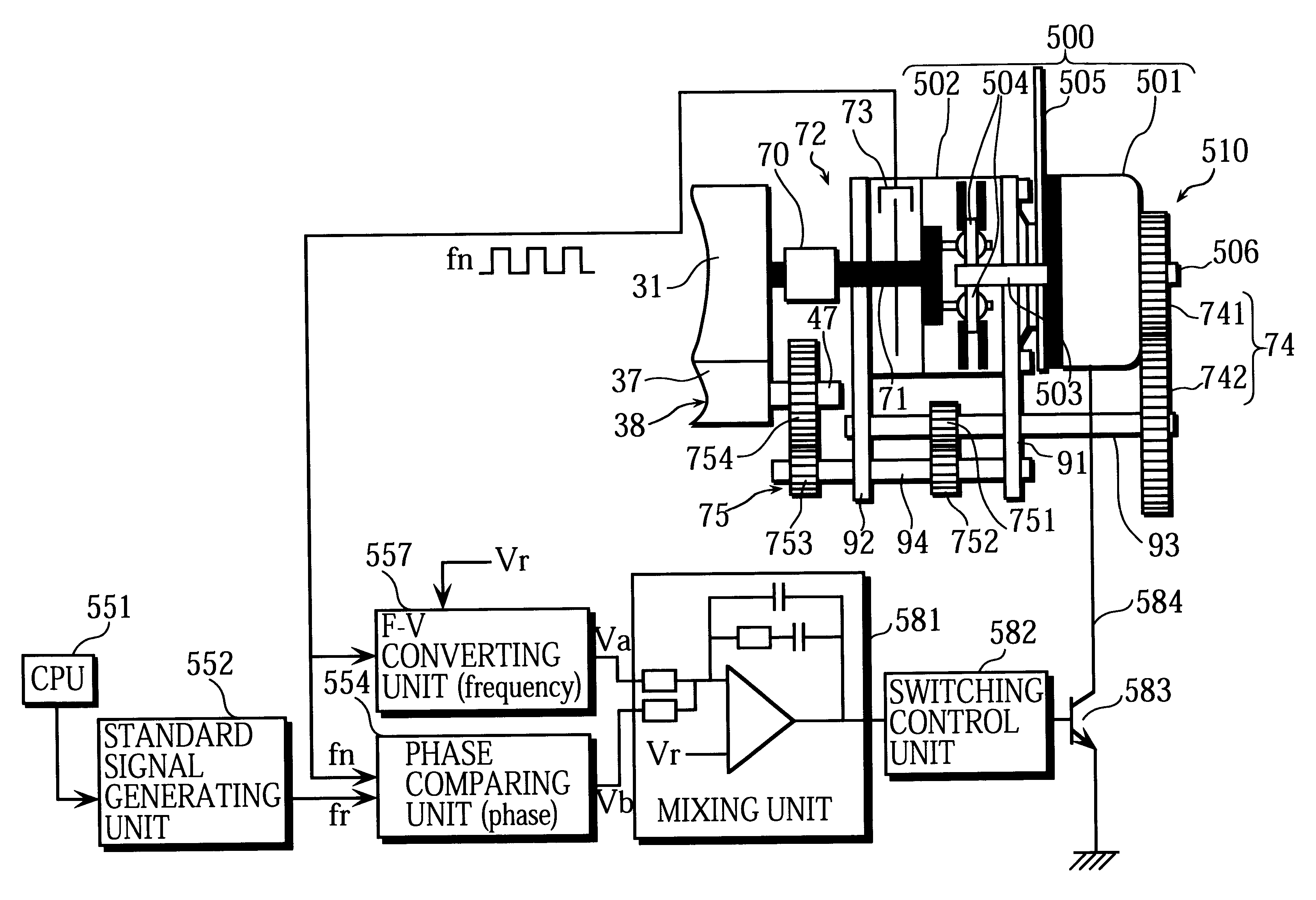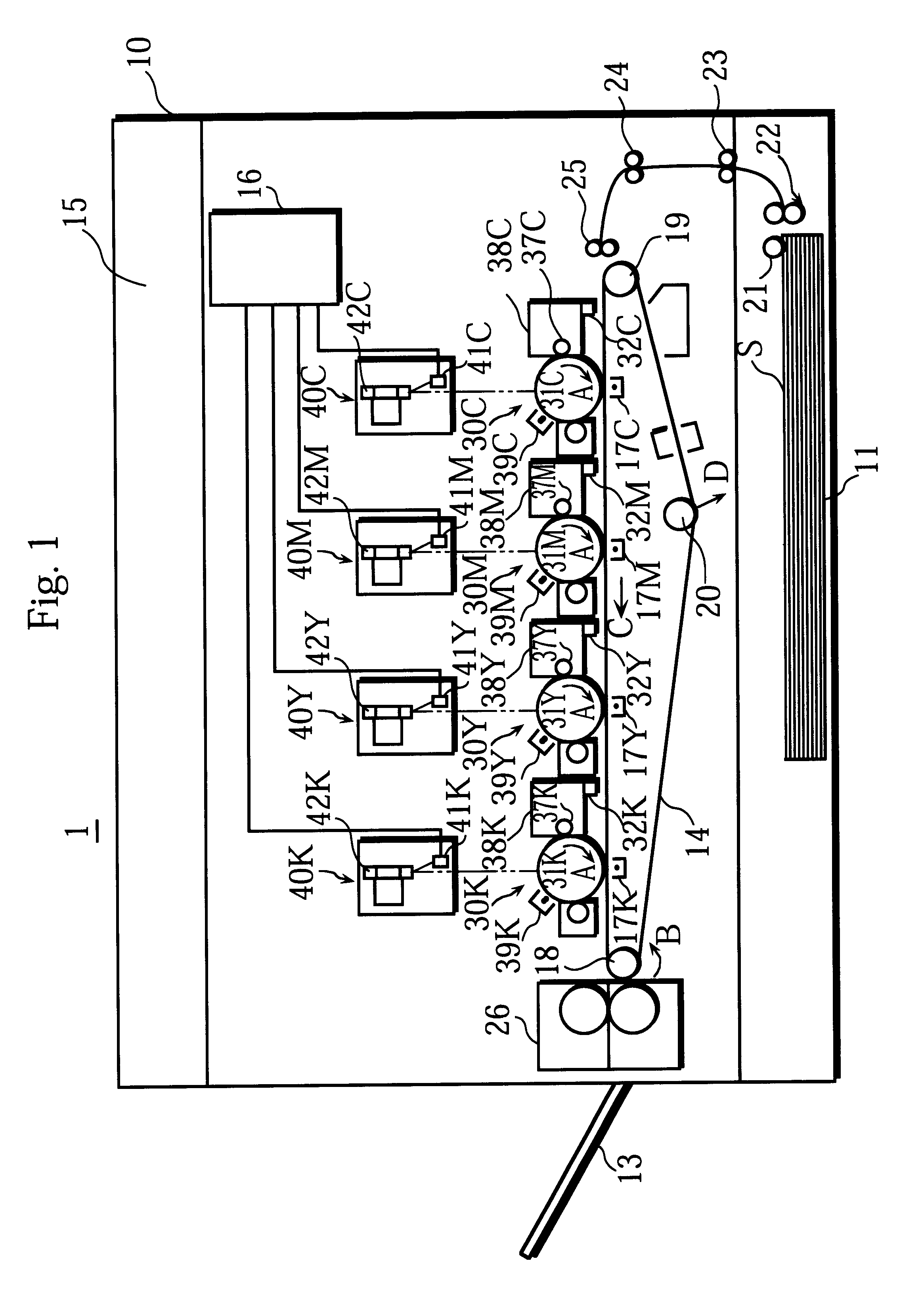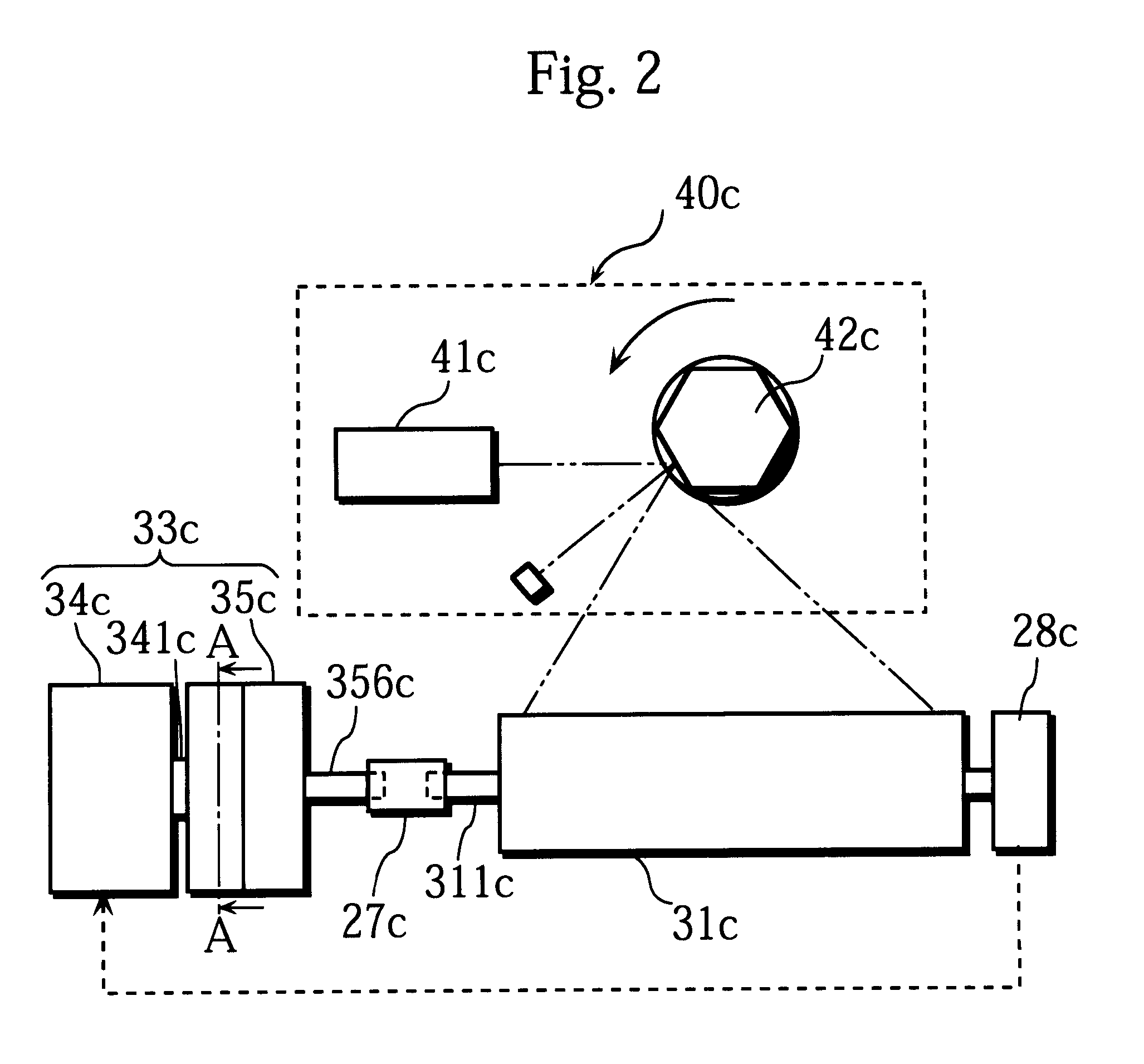Rotator driving device, image forming apparatus using the rotator driving device, and method of driving rotator
a driving device and image forming technology, applied in the direction of mechanical energy handling, electrographic process, instruments, etc., can solve the problems of deteriorating image quality, inconsistency in the print density of a reproduced image, and inability to meet the distances between scanning lines
- Summary
- Abstract
- Description
- Claims
- Application Information
AI Technical Summary
Benefits of technology
Problems solved by technology
Method used
Image
Examples
first embodiment
1. Entire Construction of the Copier
FIG. 1 is a cross-sectional view showing the entire construction of a copier 1 of the present embodiment. The copier 1 includes image forming units 30C, 30M, 30Y, and 30K that are set above a transporting belt 14 along its length. The transporting belt 14 is horizontally set in a lower space of an enclosure 10. Below the transporting belt 14, a paper feeding cassette 11 is set at the lowermost position of the enclosure 10 and can be freely slid in and out of the copier 1. A recording sheet S is taken by a pick-up roller 21 from the paper feeding cassette 11 and then carried to the transporting belt 14 by means of transporting rollers 22 to 25. The transporting belt 14 transports the recording sheet S, and the image forming units 30C to 30K sequentially transfer toner images for reproduction colors, i.e. cyan, magenta, yellow, and black, onto the recording sheet S. The toner images are superimposed on the recording sheet S to form a full-color imag...
second embodiment
In the first embodiment, the photosensitive drums 31C to 31K are rotationally driven using the planetary-roller reduction devices. In the second embodiment, a photosensitive drum and a developing roller are rotationally driven using one driving motor. Note that a copier of the present embodiment is the same as the copier 1 of the first embodiment, except for a rotator driving device used for rotationally driving the photosensitive drum and the developing roller. Therefore, the explanation for the same components of the copiers is omitted in the present embodiment. These same components are assigned the same numerals as in the first embodiment.
FIG. 7 shows a construction of a driving device 510 for rotationally driving the rotators, i.e. the photosensitive drum and the developing roller of the developing unit. This figure also diagrammatically shows a circuit construction for rotationally driving a driving motor 501. The driving device 510 is provided for each pair of a photosensitiv...
third embodiment
In the second embodiment, the reduction gear mechanism is employed for the branching unit that transfers the rotational force of the driving motor 501 to both the photosensitive drum 31 and the developing roller 37. In the third embodiment, a magnetic linking mechanism using inner and outer magnetic rotators is employed for a branching unit. The magnetic linking mechanism is explained below. Note that a copier of the present embodiment is the same as the copier 1 of the second embodiment, except for the construction of the branching unit. Therefore, the explanation for the same components of the copiers is omitted in the present embodiment.
FIG. 10 shows a construction of a driving device 520 of the present embodiment. The driving device 520 is provided for each pair of a photosensitive drum and a developing unit, meaning that four driving device 520 are provided in the copier of the present embodiment. Therefore, in FIG. 10, the components are assigned numerals without C, M, Y, or K...
PUM
 Login to View More
Login to View More Abstract
Description
Claims
Application Information
 Login to View More
Login to View More - R&D
- Intellectual Property
- Life Sciences
- Materials
- Tech Scout
- Unparalleled Data Quality
- Higher Quality Content
- 60% Fewer Hallucinations
Browse by: Latest US Patents, China's latest patents, Technical Efficacy Thesaurus, Application Domain, Technology Topic, Popular Technical Reports.
© 2025 PatSnap. All rights reserved.Legal|Privacy policy|Modern Slavery Act Transparency Statement|Sitemap|About US| Contact US: help@patsnap.com



